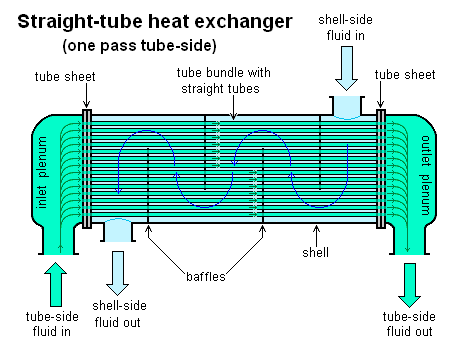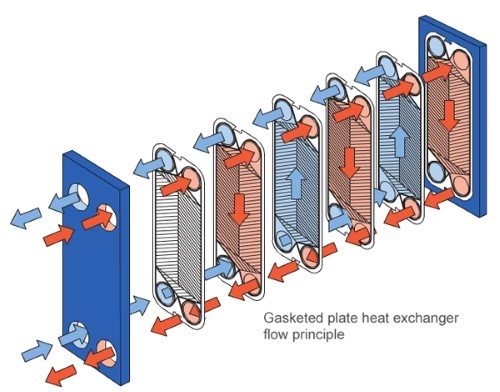Put simply, a heat exchanger is a device which transfers heat from one medium to another, a Hydraulic Oil Cooler or example will remove heat from hot oil by using cold water or air. Alternatively, a Swimming Pool Heat Exchanger uses hot water from a boiler or solar heated water circuit to heat the pool water. Heat is transferred by conduction through the exchanger materials which separate the mediums being used. A shell and tube heat exchanger passes fluids through and over tubes, where as an air-cooled heat exchanger passes cool air through a core of fins to cool a liquid.
What types of Heat Exchanger are available?
There are many different types of heat exchanger available, the 2 main types are:

Shell and Tube Heat Exchangers consist of a large number of small tubes which are located within a cylindrical shell. The tubes are positioned into the cylinder using a tube bundle or “tube stack” which can either have fixed tube plates (permanently fixed to the body) or, in the case of Heat Exchangers a floating tube stack which allows the tube bundle to expand and contract with varying heat conditions as well as allowing the tube bundle to be easily removed for servicing and maintenance.

Plate Heat Exchangers operate in very much the same way as a shell and tube heat exchanger, using a series of stacked plates rather than tubes. Plate heat exchangers are usually brazed or gasketed depending on the application and fluids being used. Their compact stainless steel construction makes them an ideal choice for use with refrigerants or in food and beverage processing.


